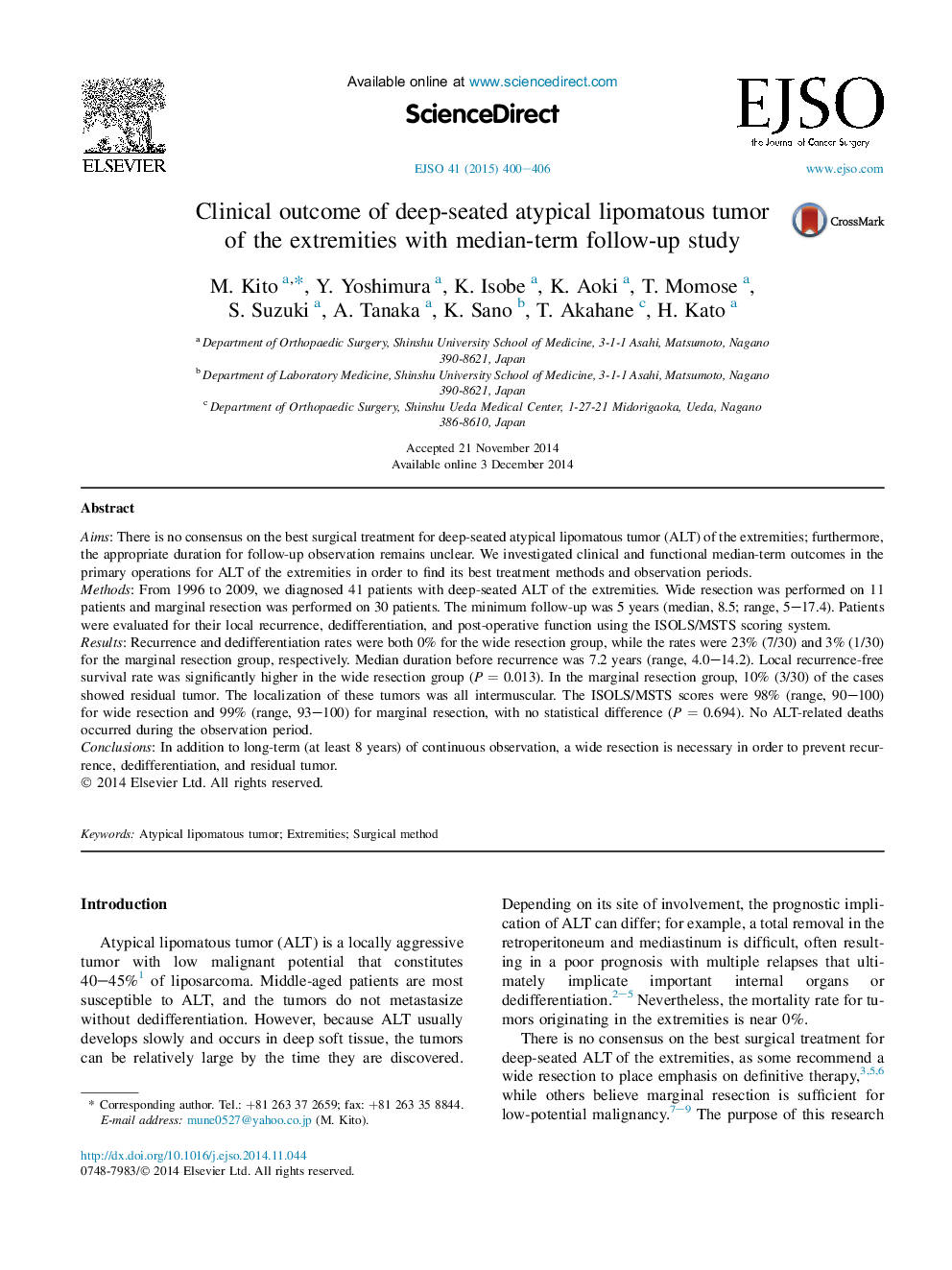| Article ID | Journal | Published Year | Pages | File Type |
|---|---|---|---|---|
| 6191522 | European Journal of Surgical Oncology (EJSO) | 2015 | 7 Pages |
AimsThere is no consensus on the best surgical treatment for deep-seated atypical lipomatous tumor (ALT) of the extremities; furthermore, the appropriate duration for follow-up observation remains unclear. We investigated clinical and functional median-term outcomes in the primary operations for ALT of the extremities in order to find its best treatment methods and observation periods.MethodsFrom 1996 to 2009, we diagnosed 41 patients with deep-seated ALT of the extremities. Wide resection was performed on 11 patients and marginal resection was performed on 30 patients. The minimum follow-up was 5 years (median, 8.5; range, 5-17.4). Patients were evaluated for their local recurrence, dedifferentiation, and post-operative function using the ISOLS/MSTS scoring system.ResultsRecurrence and dedifferentiation rates were both 0% for the wide resection group, while the rates were 23% (7/30) and 3% (1/30) for the marginal resection group, respectively. Median duration before recurrence was 7.2 years (range, 4.0-14.2). Local recurrence-free survival rate was significantly higher in the wide resection group (PÂ =Â 0.013). In the marginal resection group, 10% (3/30) of the cases showed residual tumor. The localization of these tumors was all intermuscular. The ISOLS/MSTS scores were 98% (range, 90-100) for wide resection and 99% (range, 93-100) for marginal resection, with no statistical difference (PÂ =Â 0.694). No ALT-related deaths occurred during the observation period.ConclusionsIn addition to long-term (at least 8 years) of continuous observation, a wide resection is necessary in order to prevent recurrence, dedifferentiation, and residual tumor.
